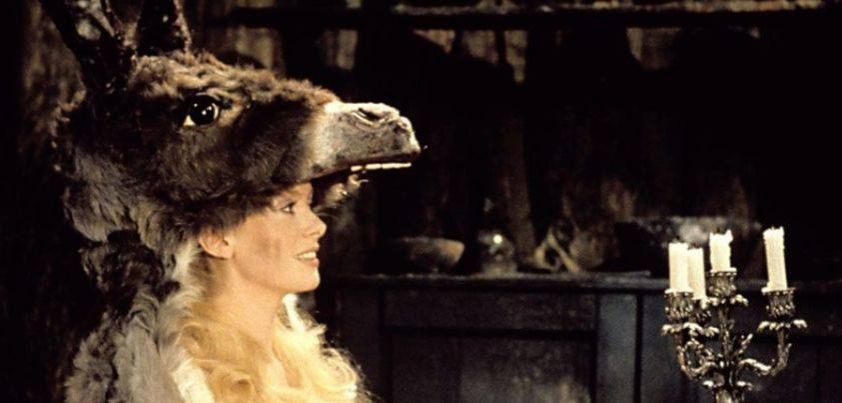 The lessons taught by many folktales are just as important today as they were hundreds of years ago. Donkey Skin deals with sexual abuse in the form of incest between father and daughter. A powerful king wants to marry his daughter, as this is the only way he can keep a promise he made to his dying wife. Fortunately, the brave girl has other ideas. I find it interesting that the story makes it clear that the king’s actions are wrong, but seems to have no problem with a handsome prince who spies on women through key holes.
The lessons taught by many folktales are just as important today as they were hundreds of years ago. Donkey Skin deals with sexual abuse in the form of incest between father and daughter. A powerful king wants to marry his daughter, as this is the only way he can keep a promise he made to his dying wife. Fortunately, the brave girl has other ideas. I find it interesting that the story makes it clear that the king’s actions are wrong, but seems to have no problem with a handsome prince who spies on women through key holes.
Two other well-known folktales with this “unnatural love” theme are the Brothers Grimm’s All Kinds of Fur (Household Tales No. 65) and Giambattista Basile’s The She-Bear (Pentamerone, Tale 16). The English folktale Cap O’ Rushes, featured elsewhere on our website, is another example.
Original Text / PDF (2,441 words)
All Kinds of Fur Original Text / PDF (2,148 words)
The She-Bear Original Text / PDF (3016 words)
General Comments
Donkey Skin was one of the first stories documented by the great French children’s story author, Charles Perrault. It was first published in 1694 and, like many stories of the time, was written in verse. Stories like this were designed to be listened to (often while being performed on stage) rather than read.
Our source, which is very close to the original, was from Old-Time Stories told by Master Charles Perrault, translated by A. E. Johnson. We have mentioned before how some folktales have changed over time in order to make them more acceptable to the changing tastes of readers. This happened with two of the earliest English translations of Donkey Skin:
- The first English translation was by Robert Samber in his 1729 book Histories, or Tales of Past Time (copy available for download here). This story gets around the incest issue by telling us that the king became insane when he could not find a suitable woman to marry after his first wife died. He came to believe that he was young again, and that the princess was his dead wife at the time they first met.
- In 1900, Scottish folktale collector Andrew Lang published the story in his Grey Fairy Book (copy available for download here). This was at the end of the Victorian Period where (among the middle classes at least) being seen to act according the strict moral values of the time was important. Lang’s way of getting around the “i-word” was to describe the princess as having been adopted. Interestingly, Lang also changed the description of the donkey to have gold fall from the animal’s ears rather than the other end of its body.
Incest of various kinds has been a common practice in many cultures, most notably among royalty to keep their blood lines pure. However, in almost all cases, this has been limited to second-degree (brother-sister) and third-degree (cousin-uncle-aunt) relationships. Parent-child incest is rarely accepted, and in most countries would be considered sexual abuse because of the position of power that parents hold over their children. Consider then how the pressure to agree would be many times greater where the parent is also an all-powerful king. The girl in the story would have needed a lot of courage to say “NO” as she did.
The moral of the story according to Perrault can be paraphrased as follows:
It is better to go through the greatest hardships than to do what is wrong. You may think that doing the right thing all the time can sometimes lead to problems, but people who do this always win out in the end.
There is also an important unstated lesson:
Life is not always fair.
The king, who planned to commit incest with his daughter and did not even offer an apology at the end, receives no punishment at all. Sadly, this is often what happens with powerful people in the real world.
There are a surprising number of folktales in which the main feature is a father who wants to marry his daughter. It has been suggested that the inspiration for many of these was a 7th century Christian tale, The Legend of St Dympna. According to this, an Irish king made a promise to his dying wife that he would only remarry if he found someone as beautiful as she was. After looking around, he decided to marry his daughter Dympna. The girl, who was a deeply religious Christian, ran off to Belgium to escape him. In this story the girl is not as lucky as Donkey Skin. The king follows her and has her head cut off. Although there was no magical helper to save Dympna while she was alive, many miracles (especially cures for madness and epilepsy) are said to have occurred at the place she died. Today, Dympna is Belgium’s patron saint of the insane.